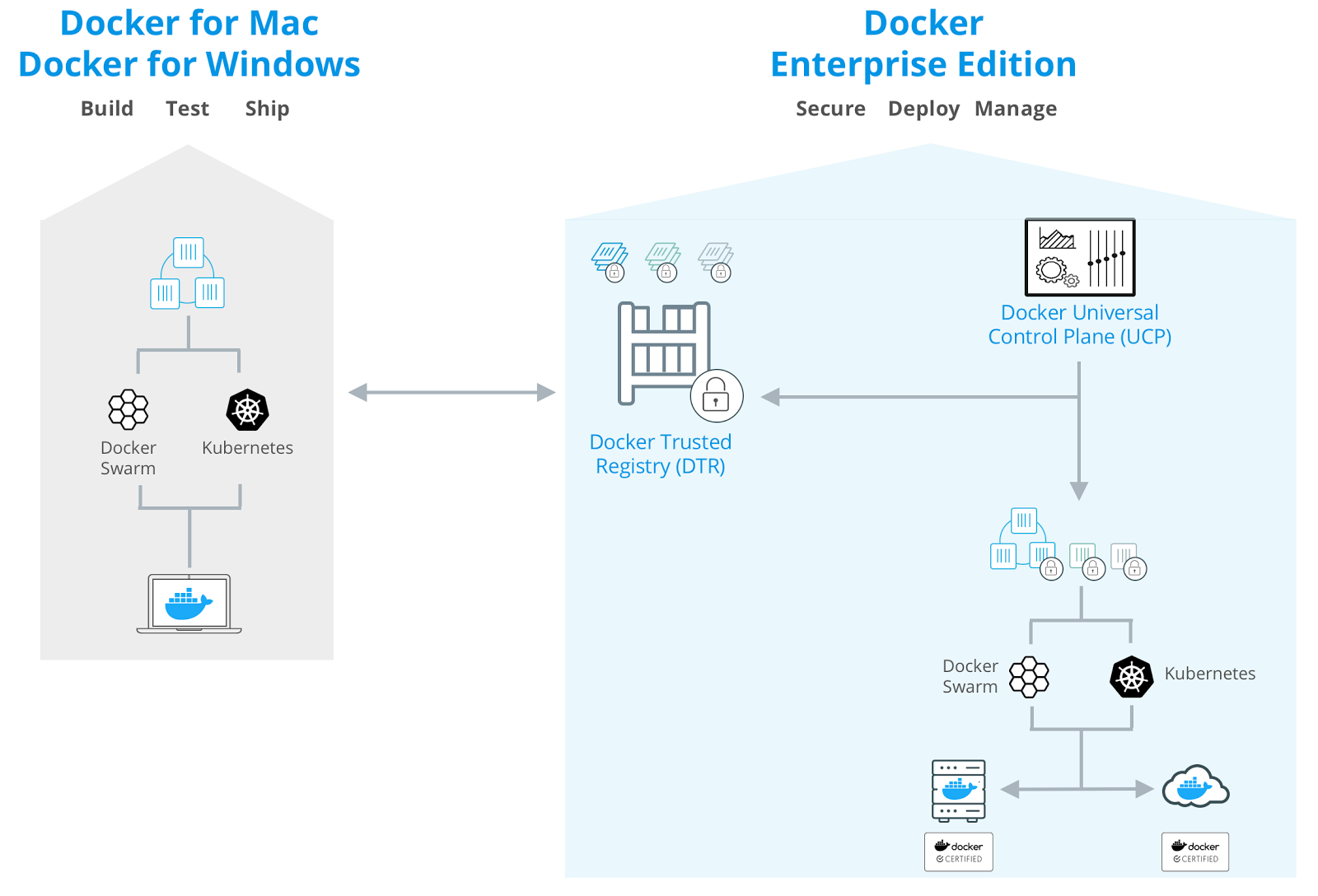
Kubectl to deploy and manage apps on Kubernetes.A Hypervisor (like VirtualBox or HyperKit) to manage virtual machines.It's a great way to quickly get a cluster up and running so you can start interacting with the Kubernetes API.įollow the official Get Started guide to get Minikube installed along with: Minikube is a tool which allows developers to use and run a Kubernetes cluster locally.
STARTING IWTH DOCKER AND KUBERNETES HOW TO
Want to learn how to build this project? Check out the Developing a Single Page App with Flask and Vue.js blog post. Project SetupĬlone down the flask-vue-kubernetes repo, and then build the images and spin up the containers: A PersistentVolumeClaim is a request to use the PersistentVolume by a user.įor more, review the Learn Kubernetes Basics tutorial as well as the Kubernetes Concepts slides from the Scaling Flask with Kubernetes talk.It's managed outside of the particular Pod that it resides in. A PersistentVolume defines a storage volume independent of the normal Pod-lifecycle.They are especially important for stateful applications like Redis and Postgres. Volumes are used to persist data beyond the life of a container.

Ingress is a set of routing rules used to control the external access to Services based on the request host or path.You can think of them like CSS selectors. Labels are key/value pairs that are attached to resources (like Pods) which are used to organize related resources.They dictate how Pods are created, deployed, and replicated. Deployments are used to describe the desired state of Kubernetes.It's an abstraction layer over the Pods Pods are meant to be ephemeral while services are much more persistent. It enables load balancing and service discovery.
 A Service is a logical set of Pods that perform a similar function. Containers in a Pod are deployed together and share resources (like data volumes and network addresses). A Pod is a logical, tightly-coupled group of application containers that run on a Node. Each Node is managed by the Kubernetes master. A Node is a worker machine provisioned to run Kubernetes. Kubernetes Conceptsīefore diving in, let's look at some of the basic building blocks that you have to work with from the Kubernetes API: There's also a number of managed Kubernetes services on the market:įor more, review the Choosing the Right Containerization and Cluster Management Tool blog post. Large community, flexible, most features, hipĮasy to set up, perfect for smaller clustersįully-managed service, integrated with AWS use ECS if you're already using a number of AWS services. use Docker Swarm if you are just getting started and/or need to manage small to medium-sized clusters. use Kubernetes if you need to manage large, complex clusters. This is where Kubernetes fits in along with a number of other orchestration tools, like Docker Swarm, ECS, Mesos, and Nomad. Expose Flask and Vue to external users via an IngressĪs you move from deploying containers on a single machine to deploying them across a number of machines, you'll need an orchestration tool to manage (and automate) the arrangement, coordination, and availability of the containers across the entire system. Run Flask, Gunicorn, Postgres, and Vue on Kubernetes. Use Kubernetes Secrets to manage sensitive information. Set up a volume to hold Postgres data within a Kubernetes cluster. Configure a Kubernetes cluster to run locally with Minikube. Spin up a Python-based microservice locally with Docker Compose. Explain the following Kubernetes primitives: Node, Pod, Service, Label, Deployment, Ingress, and Volume.
A Service is a logical set of Pods that perform a similar function. Containers in a Pod are deployed together and share resources (like data volumes and network addresses). A Pod is a logical, tightly-coupled group of application containers that run on a Node. Each Node is managed by the Kubernetes master. A Node is a worker machine provisioned to run Kubernetes. Kubernetes Conceptsīefore diving in, let's look at some of the basic building blocks that you have to work with from the Kubernetes API: There's also a number of managed Kubernetes services on the market:įor more, review the Choosing the Right Containerization and Cluster Management Tool blog post. Large community, flexible, most features, hipĮasy to set up, perfect for smaller clustersįully-managed service, integrated with AWS use ECS if you're already using a number of AWS services. use Docker Swarm if you are just getting started and/or need to manage small to medium-sized clusters. use Kubernetes if you need to manage large, complex clusters. This is where Kubernetes fits in along with a number of other orchestration tools, like Docker Swarm, ECS, Mesos, and Nomad. Expose Flask and Vue to external users via an IngressĪs you move from deploying containers on a single machine to deploying them across a number of machines, you'll need an orchestration tool to manage (and automate) the arrangement, coordination, and availability of the containers across the entire system. Run Flask, Gunicorn, Postgres, and Vue on Kubernetes. Use Kubernetes Secrets to manage sensitive information. Set up a volume to hold Postgres data within a Kubernetes cluster. Configure a Kubernetes cluster to run locally with Minikube. Spin up a Python-based microservice locally with Docker Compose. Explain the following Kubernetes primitives: Node, Pod, Service, Label, Deployment, Ingress, and Volume.  Discuss the pros and cons of using Kubernetes over other orchestration tools like Docker Swarm and Elastic Container Service (ECS). Explain what container orchestration is and why you may need to use an orchestration tool. By the end of this tutorial, you will be able to:
Discuss the pros and cons of using Kubernetes over other orchestration tools like Docker Swarm and Elastic Container Service (ECS). Explain what container orchestration is and why you may need to use an orchestration tool. By the end of this tutorial, you will be able to:







 0 kommentar(er)
0 kommentar(er)
